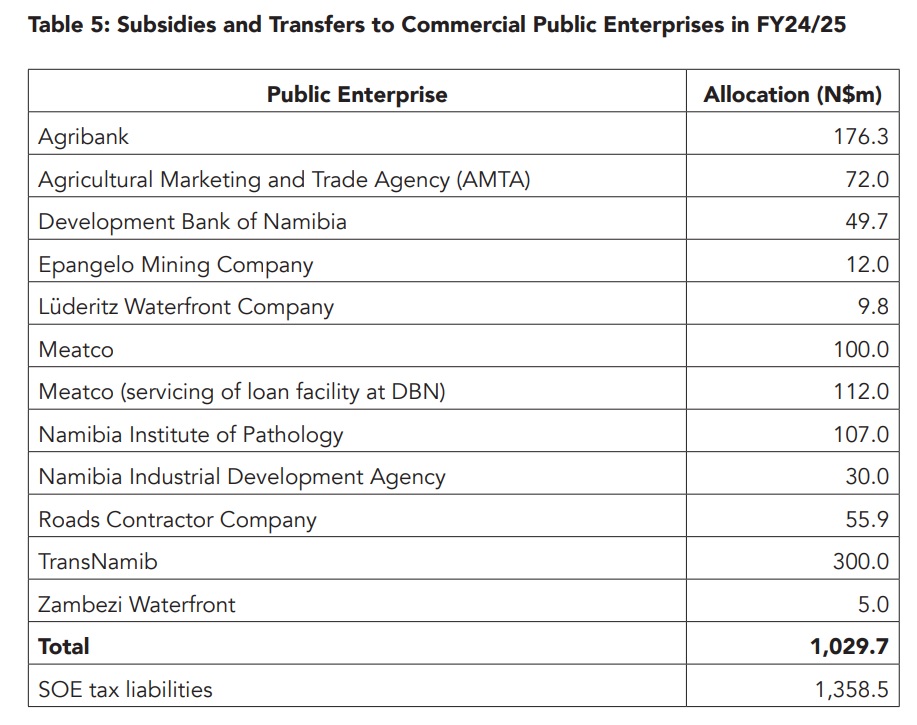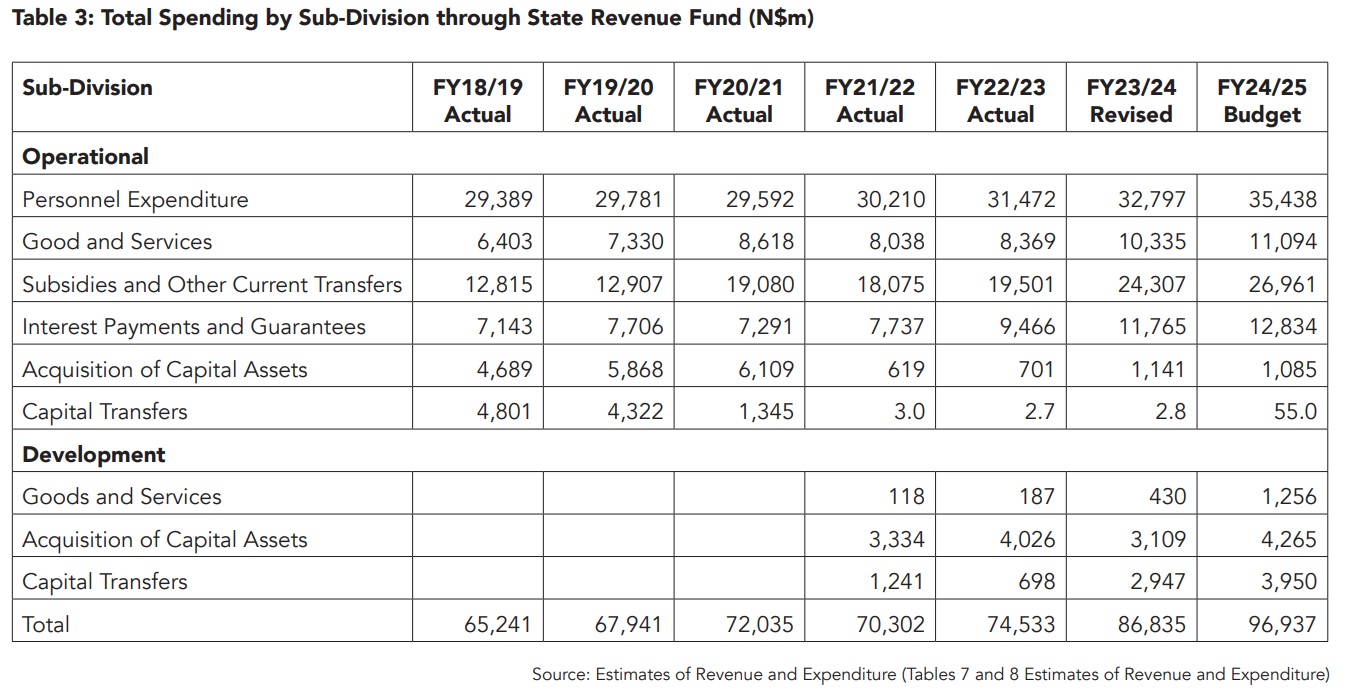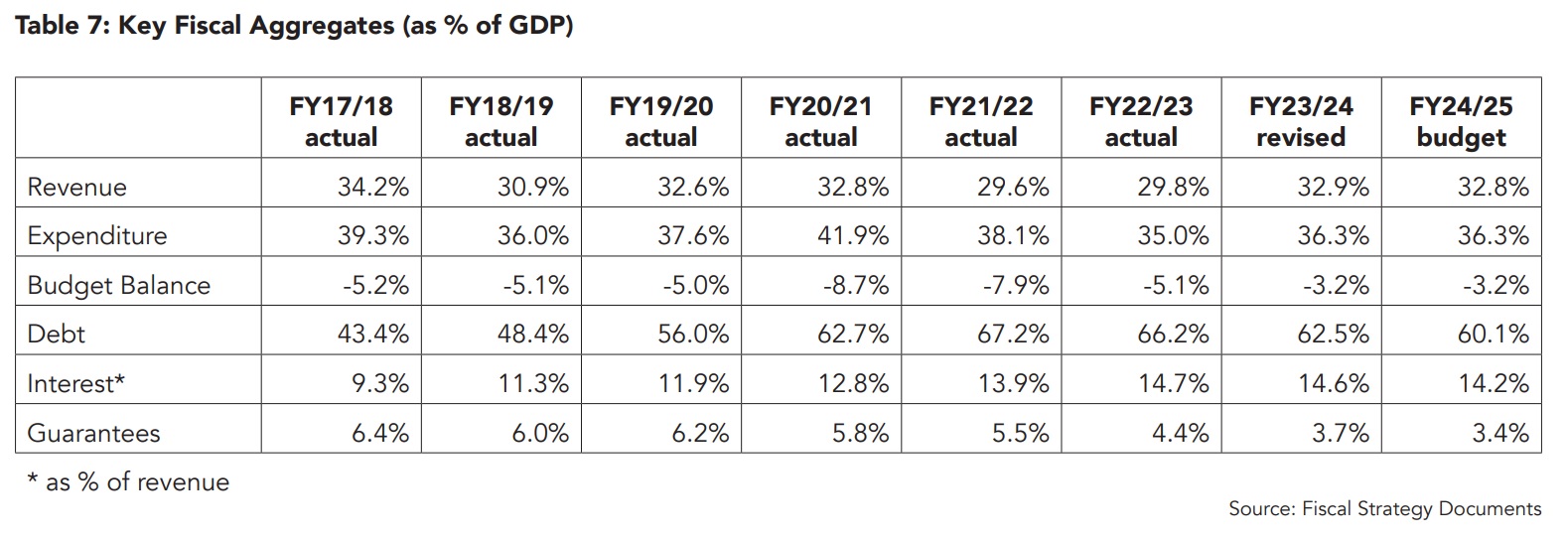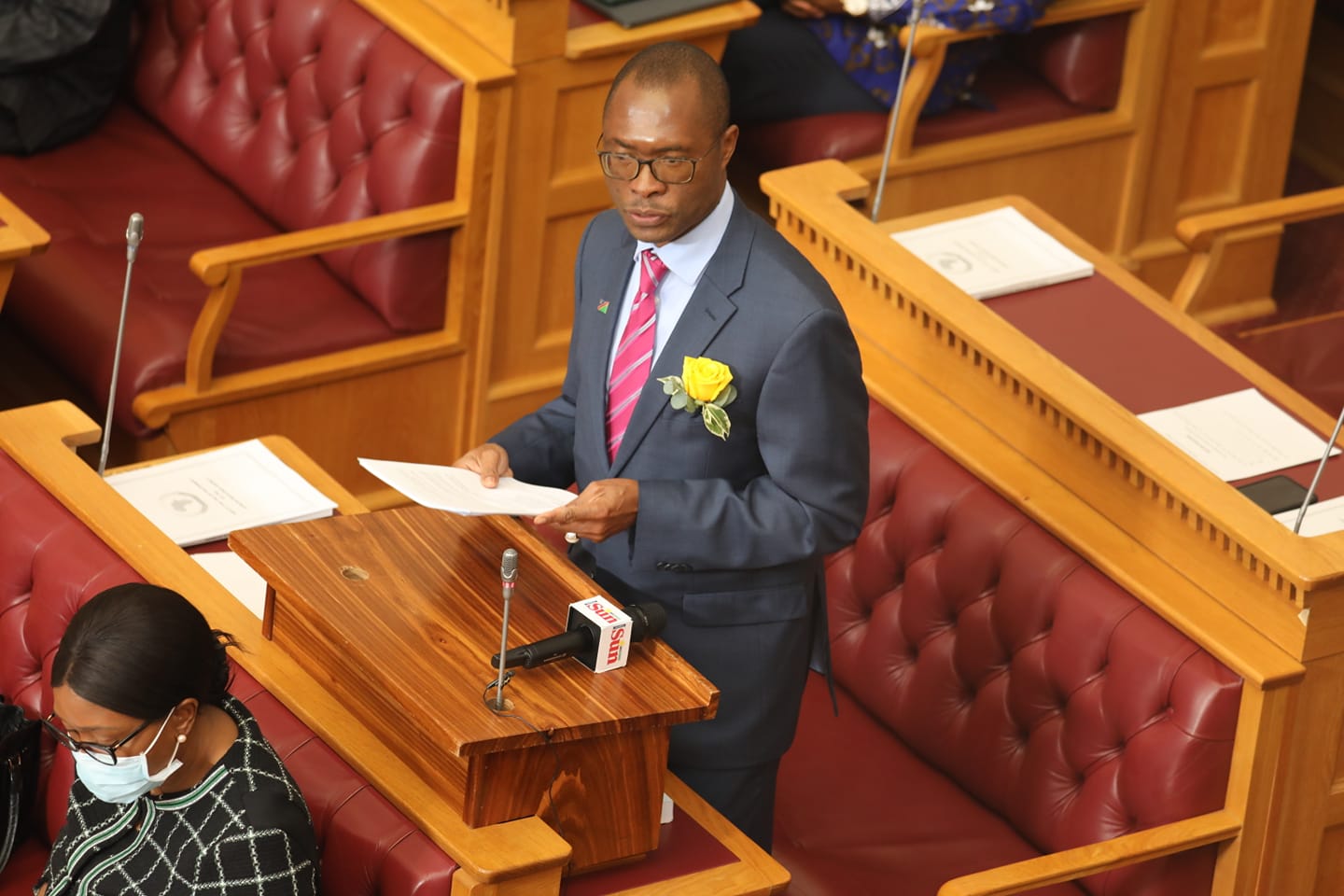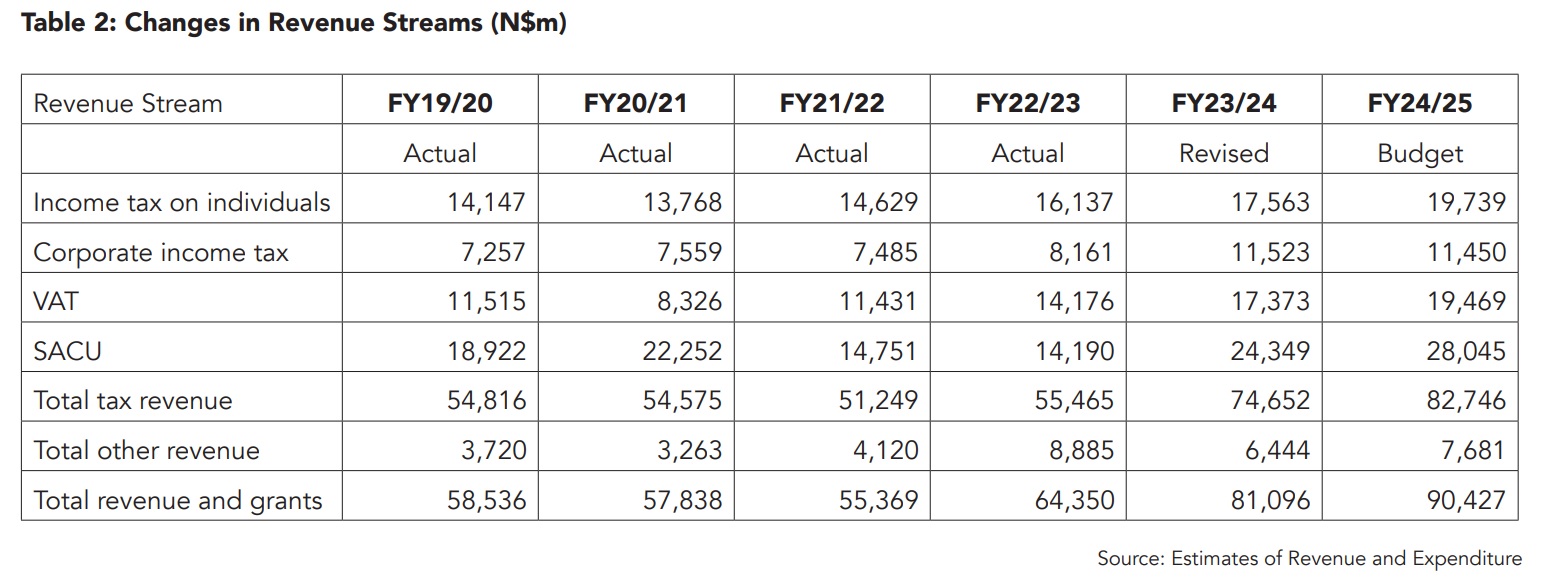Business as usual
Shiimi ‘right man for the job’
Robin Sherbourne, a freelance economist, former director of the Institute of Public Policy Research (IPPR) and the author of the IPPR's "Guide to the Namibian Economy", has analysed Namibia's national budgets since Independence. Here is an excerpt of his analysis of the recently tabled 2024/25 Budget in an IPPR briefing paper, titled "Benefitting for the Fruits of Growth".
Robin Sherbourne - The 2024/25 Budget saw a continued return to steady economic growth and growth in revenues, giving finance minister more fiscal headroom to raise spending, whilst at the same time making important changes to corporate and individual income tax, and gradually reducing the size of public debt as a proportion of the economy. Given presidential and national assembly elections are due to take place at the end of the year, the budget was surprisingly restrained with few, if any, outright bribes to the electorate.
Tough decisions – on public enterprises, the size and efficiency of the public sector, the quality of public services, on the Public Service Medical Aid Scheme (Psemas) – were conspicuous by their absence, and there continue to be questions about the quality of public spending, especially on infrastructure.
The minister admitted the recovery will not be nearly sufficient to address the country’s high unemployment.
Namibia has not measured employment and unemployment since 2018, but the creation of sustainable jobs and employment opportunities remains the central economic challenge.
Nonetheless, the minister has successfully steered the economy and the public finances through their most challenging period since Independence, and for that, he deserves the country’s thanks.
Forecasts
Minister Shiimi presented a growth estimate of 6.4% for 2022 and growth forecasts for the calendar years 2023 (6.4%), 2024 (4.0%), and 2025 (3.9%) - all of which represented upward revisions compared to the forecasts contained in the last Mid-Year Budget Review in October.
It is useful to compare these with forecasts made in the past three budgets going back to the onset of Covid-19.
The huge knock to gross domestic product (GDP) in 2020 has stabilised at -8.1%, after which the economy has recovered and is now thought to have grown by 3.5% in 2021, 6.4% in 2022, and 5.6% in 2023.
Overall, Covid resulted in the economy taking a more significant hit than originally expected but of shorter duration, and the recovery has been stronger than initially forecast.
The Minister, having been dealt a very poor hand by his predecessor going into the Covid pandemic, has successfully steered the economy and the public finances through the most challenging period since Independence.
It also says something about late President Hage Geingob’s ability to pick the right man for the job and indeed Cabinet’s willingness to go along with the tough decisions that have had to be taken over the past four years.
Spending
Total budgeted spending, operational plus development, through the State Revenue Fund is estimated at N$96.937 billion in the fiscal year 2024/25.
All budget votes, with the single exception of Vote 26 (National Planning Commission), have been allocated more resources this year than last, reflecting the fiscal loosening.
The reduction in Vote 26 is due to the fact that the major expenditures associated with the Population and Housing Census have been incurred in 2023/24.
The ministry of finance and public enterprises receives N$8.1 billion in FY24/25, including N$3 billion for Psemas and more than N$700 million in transfers to public enterprises.
A significant N$1.4 billion was provided to a range of public enterprises to clear their tax liabilities.
This, the minister said, is a once-off measure that came about due to the fiscal consolidation of previous years and includes the University of Namibia, TransNamib, the Namibian Broadcasting Corporation, New Era Corporation, the National Fishing Corporation and the Roads Contractor Company.
This is recorded as both revenue and expenditure in the ministry’s books and is therefore neutral from a fiscal perspective.
Wage bill
The public sector wage bill is projected to take up 35.0% of total budgeted spending.
The Minister does not say what happened to Cabinet’s decision two years ago to freeze the filling of all non-essential posts.
Shortly after last year’s budget was tabled, late president Geingob made a public statement to the effect that the number of public servants should be reduced by half.
At the time, the Public Service Commission chairperson said the civil service included 107 000 employees inclusive of the security cluster, but it was not clear where this number comes from.
This year, the table on staffing has been included in the budget document. This shows that out of the 91 225 funded posts (excluding Vote 08 Defence), 86 731 are currently filled.
Interestingly, of these, 50 758 (58.5%) are filled by women and 35 973 by men.
These numbers imply that there are approximately 20 000 people employed in Vote 08 Defence.
Revenue
Total revenue and grants are estimated to amount to N$90.4 billion in FY24/25, or 32.8% of forecast GDP, and more than 11.5% higher than the revised total of N$81.1 billion in FY23/24.
Given current levels of inflation, this number is not as high as it first appears.
The increase comes about as a result of improvements across all major revenue items, reflecting the broad economic recovery that has taken place. The Minister highlighted the N$28 billion in revenues from the Southern African Customs Union (Sacu).
The minister singled out dividend payments following the expected dissolution of Namibia Post and Telecom Holdings (N$1.2 billion), as well as from the Bank of Namibia (N$550 million), Namibia Desert Diamonds (N$200 million) and Namport (N$100 million), as well as an expected N$500 million from the sale of the remaining 9% in MTC.
Deficit, debt
The revenue and expenditure estimates yield a budget deficit of N$8.9 billion or 3.2% of estimated GDP, implying that Namibia’s total debt stock continues to climb in nominal terms. However, because the economy is growing faster, debt starts to decline as a ratio of GDP, from an estimated 62.5% of GDP in FY23/24 to 60.1% in FY24/25.
The Minister stated that “public debt growth has stabilised and the debt metrics have started declining, primarily driven by strong growth in nominal GDP, which outpaced the increase in the nominal debt stock”.
He also noted that interest payments are due to increase to N$12.8 billion in FY24/25, well above government’s own benchmark of 10% of revenues and higher than public investment.
The Minister went into some detail on how he intends to tackle the repayment of the US$750 million (N$14.3 billion) Eurobond2, which matures on 29 October 2025.
As he pointed out, this is the largest single-day debt maturity in Namibia’s history.
At least N$3.5 billion will be directed to the sinking fund in FY24/25, and another N$2.0 billion set aside from receipts of Sacu next year.
This adds to the already accumulated N$4.2 billion, which should allow government to retire two-thirds of the Eurobond, with the remaining one-third being refinanced through the most cost-effective instrument available at the time.
This year the African Development Bank will lend a further N$1.751 billion, for railway upgrading and water projects, while Germany’s KfW will lend N$683 million for water projects. But as always, these will not be channelled through the State Revenue Fund.



